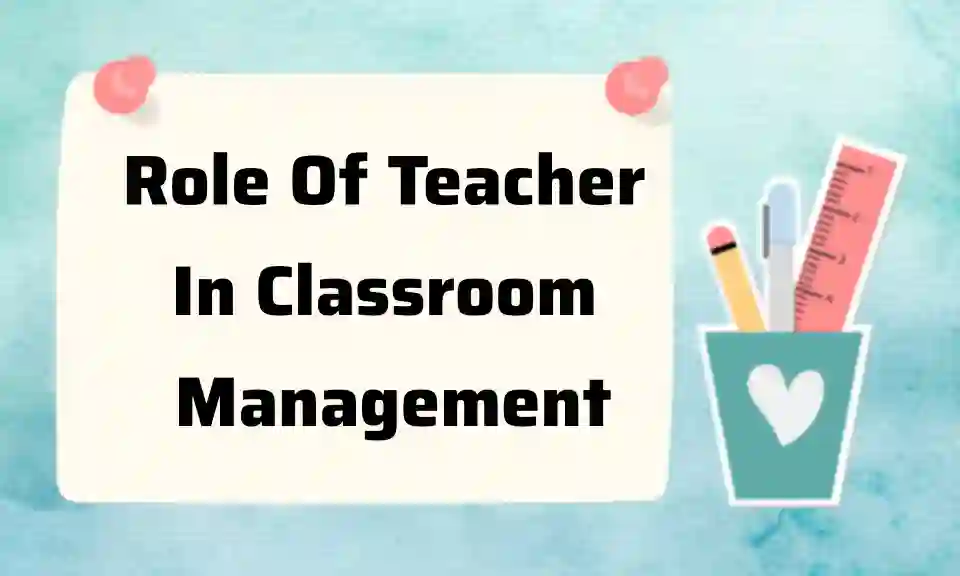The role of the teacher in classroom management is essential to the success of the learning environment. Teachers are responsible for creating a positive and productive learning environment, and they play a key role in preventing and resolving behavior problems.
Here are some of the key roles that teachers play in classroom management:
The role of a teacher in classroom management is crucial for creating a positive and effective learning environment. Classroom management refers to the strategies and techniques used by teachers to maintain order, engage students, and promote learning. Here are some key aspects of the teacher’s role in classroom management:
Establishing clear expectations
A teacher plays a vital role in setting clear expectations and rules for behavior in the classroom. This includes defining acceptable behavior, outlining consequences for misbehavior, and explaining academic expectations. By providing students with a structured environment, teachers help create a sense of security and promote a productive learning atmosphere.
Building relationships
Developing positive relationships with students is essential for effective classroom management. When students feel respected, valued, and The role of the teacher in classroom management is essential to the success of the learning environment. Teachers are responsible for creating a positive and productive learning environment, and they play a key role in preventing and resolving behavior problems.supported, they are more likely to engage in learning and adhere to classroom rules. Teachers can foster positive relationships by getting to know their students individually, showing empathy, and creating opportunities for open communication.
Providing structure and routines
Teachers are responsible for establishing daily routines and structures that help students understand expectations and transitions. Clear routines for tasks such as entering the classroom, starting and ending lessons, group work, and transitions between activities can minimize disruptions and maximize instructional time.
Encouraging student engagement
Engaged students are more likely to be focused, motivated, and well-behaved. Teachers can foster engagement by using various instructional strategies that promote active participation, such as hands-on activities, group work, discussions, and technology integration. By making lessons interesting and relevant, teachers can enhance student involvement and reduce the likelihood of disruptive behavior.
Applying positive behavior management techniques
Effective teachers employ positive behavior management techniques to reinforce desired behaviors and discourage negative ones. This includes providing praise and recognition for good behavior, using nonverbal cues to redirect students, and implementing reward systems or incentives. By focusing on positive reinforcement rather than solely on punishment, teachers can create a more positive classroom climate.
Addressing conflict and behavior issues: Conflict and behavior issues are bound to arise in any classroom. It is the teacher’s responsibility to address these issues promptly and fairly. By employing strategies such as active listening, conflict resolution techniques, and problem-solving discussions, teachers can help students understand and resolve conflicts in a respectful manner.
Teachers serve as role models for their students. They should demonstrate the behaviors they expect from their students, including respect, integrity, and responsibility. When teachers model appropriate behavior consistently, students are more likely to emulate those behaviors, creating a positive classroom culture.
Continuous monitoring and reflection
Effective classroom management is an ongoing process that requires constant monitoring and reflection. Teachers need to be observant and responsive to the dynamics of the classroom, adapting strategies as necessary. Regular self-reflection and evaluation allow teachers to assess the effectiveness of their management techniques and make adjustments accordingly.
Providing positive reinforcement
Teachers should praise students for positive behavior, and they should use other forms of positive reinforcement, such as rewards, to encourage good behavior. This helps motivate students to behave in a positive way.
Responding to misbehavior appropriately
When students do misbehave, teachers need to respond appropriately. This may involve using a variety of strategies, such as redirection, time-outs, or natural consequences. The goal is to teach students how to behave appropriately and to prevent future misbehavior.
Overall, the teacher’s role in classroom management is multifaceted, encompassing the establishment of expectations, building relationships, providing structure, promoting engagement, applying positive behavior management techniques, addressing conflicts, modeling appropriate behavior, and engaging in continuous monitoring and reflection. By fulfilling these roles, teachers can create a conducive environment for learning, growth, and overall student success.
However, In addition to these key roles, teachers may also need to:
- Organize the classroom environment in a way that promotes positive behavior.
- Communicate effectively with students, parents, and administrators.
- Be aware of the individual needs of their students.
- Be flexible and adaptable in their approach to classroom management.
Here are some additional tips for teachers on classroom management:
- Be proactive. Don’t wait for problems to arise before taking action. Set clear expectations and rules from the beginning, and be consistent in enforcing them.
- Be fair. Students are more likely to cooperate if they feel that they are being treated fairly. Be consistent in your application of rules and consequences, and avoid making exceptions for certain students.
- Be positive. Focus on the positive aspects of student behavior and praise students for their good work.This will help to create a positive learning environment and encourage students to behave in a positive way.
- Be patient. It takes time to develop effective classroom management skills. Be patient with yourself and your students, and don’t give up.
Classroom management is an important part of the teaching profession, and it is essential for creating a positive and productive learning environment. By understanding the key roles that teachers play in classroom management and following these tips, teachers can develop the skills they need to be effective classroom managers.
